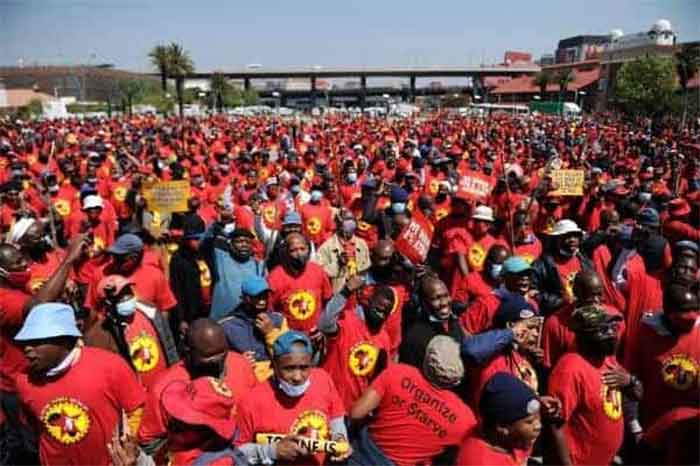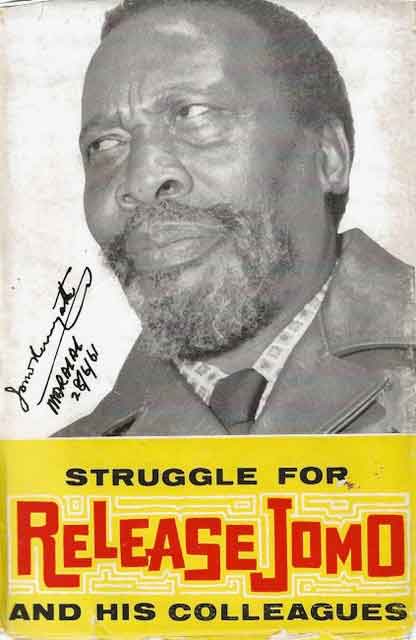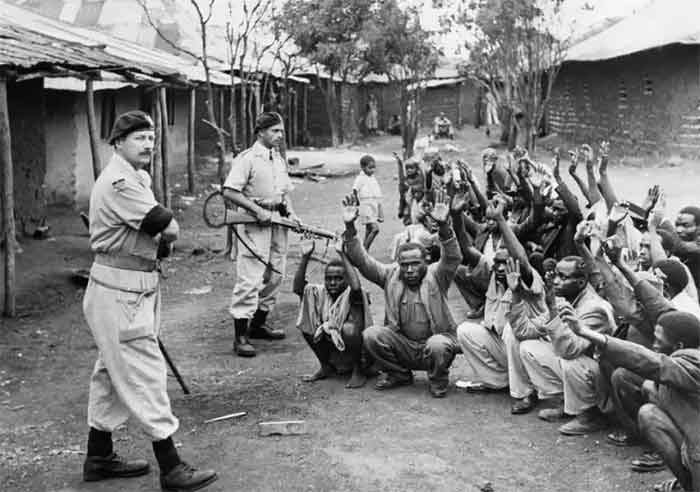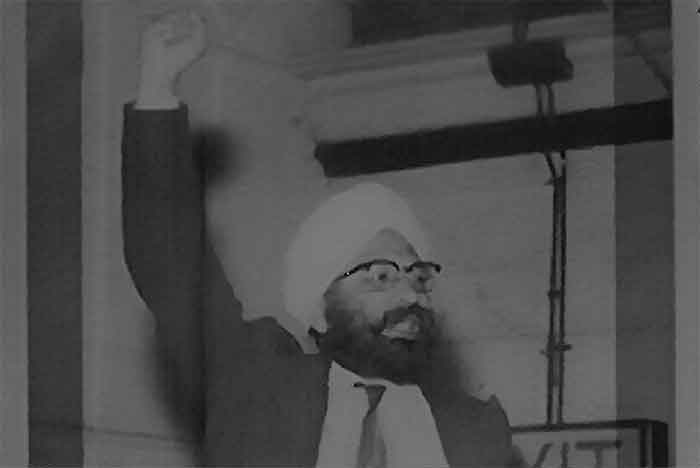
Capitalism destroys every attempt by working class to end the exploitation and oppression created by capitalism itself. That is the only way capitalism has survived over generations. Workers have organised and set up trade unions as their political, ideological and fighting force to confront the bourgeois ruling class and the state they control. Trade Unions are thus their weapon in their struggle against the bourgeoisie. However, one needs to be clear about what they are and what their aim is. This is explained clearly by Gould (2019, p.77):
TRADE UNION: The basic mass organisation of the workers for struggle for immediate objectives – improvements in wages, hours, etc., and which must “act consciously as focal points for organising the working class in the greater interest of its complete emancipation” (Marx). As class organisations, the unions cannot adopt a neutral attitude in the political struggle, but must combine the everyday struggle with the struggle for the Proletarian Dictatorship. “The theory of the ‘independence’ and ‘neutrality’ of the unions.and of narrow-minded trade unionists and co-operative society officials who have become petty bourgeois, is wholly incompatible with the theory and practice of Leninism” (Stalin).
There are several lessons to be learnt from this, lessons that trade unions in Kenya, and many other countries, also need to learn. The first is to understand the ‘immediate aims’ of a trade union: ’improvement in wages, hours’ and general working conditions. This aspect is, perhaps, well understood by trade unions.But that is not the only aim of trade unions. It is the other aspect of trade union work that has not been well understood, or well implemented, perhaps because it is too difficult to achieve as it involves greater struggle. This is to ‘combine the everyday struggles (for wages and conditions) with the struggle for Proletarian Dictatorship’. As this concept is ignored or not clearly understood, it is good to get a definition of relevant terms. Here again (Gould, 2019, p.35) comes to rescue:
DICTATORSHIP: Rule by force of one class over another, or over other classes. In the capitalist democracies, we have the concealed dictatorship of the capitalists; in fascist countries, the open terrorist dictatorship of the big capitalists. Proletarian Dictatorship is the open dictatorship of the proletariat (in alliance with other toilers, the vast majority) over the former exploiting minority of capitalists and landlords. Note: The word has no reference to rule by one man or by a small clique or party. (See Democracy, Class Struggle.)
Capitalism has ensured that its rule is not referred to, or seen as, dictatorship of the capitalist. For trade unionists, it is essential to see and teach this fact to its members. Without understanding the dictatorship of capitalists, it becomes difficult to understand its opposite, proletarian dictatorship. The main failure of trade unions in today’s world, as in Kenya and in many other countries, is not to make explicit its stand on dictatorship of the proletarian. Not only to make it clear, but to actively struggle to achieve it. Failure to do so has led to the decline of trade unions in the world currently, under massive blows from capitalism.fulfil
In order to fulfil its real mission, trade unions need to raise class consciousness among workers who cannot be fully involved in the working class struggle without this. But what is ‘class consciousness’? Gould (2019, p.18) says:
CLASS CONSCIOUSNESS: The understanding by the workers (proletarians) that (a) they represent a single class, nationally and internationally, separate from all other classes; (b) their class interests are irreconcilables opposed to those of the capitalists against whom they must organise and fight to win their economic and social demands; (c) their final aim must be Socialism, i.e., they must struggle to become “the ruling power in the State” as the step towards freeing “the whole of society from exploitation, oppression and, class struggle” (Engels). (See Labor Movement.)
There is no evidence in Kenya that trade unions are engaged in raising the class consciousness of workers. Kenyan politics is driven by bourgeois politicians ‘guiding’ workers along tribal or religious lines, and keeping them away from class issues and from their ideology of capitalism. This lack of class consciousness is particularly evident at times of elections where key issues are never about class exploitation and worker rights. This is the most important failure of the trade union movement. It was not always so, as, before independence, the trade union came up with posters such as the following one with a clear class line:
Struggle Between Capitalists and Workers has Started in Earnest
Our worker comrades! Come forward! March Ahead!
If you do not march ahead today, then remember that you will be crushed under the heels of capitalists tomorrow. Workers should have a united stand and should stand up strongly against the capitalists so that they should not ever have the courage to attempt to exploit workers again, nor to take away workers’ rights from them.
Note: The workers of M/s Karsan Ladha have gone on strike for higher wages. It has been reported that the strike situation is becoming serious. This has now become a question of life or death for workers” – Labour Trade Union of Kenya leaflet. November 29, 1936.
They had a clear understanding of class struggles and such pamphlets were distributed in working class areas for raising class consciousness among workers. Capitalism and imperialism have led the comprador government to stop all such activities and trade unions today hardly say words that denote anything to do with class or class struggle, let alone talk of socialism. Flanagan (p.53) sums up the position of trade unions in Kenya succinctly:
The trade unions have a militant tradition being part of the independence during the Mau Mau rebellion in the 1950s and many of its leaders and activists were imprisoned by the British…. This strong history of involvement in the struggle against imperialism is mostly now a spent currency within the politics of Kenya. There is no major socialist movement in Kenya that involves trade unions… Many of the union leaders from the struggle against British morphed into leadership position in the new independent government.
Trade Unions need to be active in the Political Field
The key weakness in Kenya also come from similar weakness in UK: the unions have no political aims, merely focusing on minimalist approach to meeting worker needs, rather than seeing the essential political role of unions in order to win worker rights. This aspect — meeting political and economic aims of trade unions — was one of the main contributions of the trade union movement under Makhan Singh, Fred Kubai, Bildad Kaggia and Pio Gama Pinto before independence under the East African Trade Union Congress. An important contribution that Makhan Singh made to the struggle for liberation in Kenya was to link the two aspects of the liberation struggle that imperialism sought to keep separate. These were economic and political aspects. Makhan Singh believed that in order to meet the economic demands of working people, it was essential to win political power first. It was only thus that foundations for an entirely different society could be laid. Makhan Singh saw the connections between economic demands of workers and the struggle for national liberation thus:
Kenya’s trade union movement has always been a part of her national struggle for resisting British imperialist colonial rule, for winning national independence, for consolidating the independence after winning it, and for bringing prosperity to the workers and people of Kenya (Singh, 1969, Introduction).
Thus, Makhan Singh brought together the two strands in the Kenya liberation movement –- work and conditions and politics -– which capitalism seeks to keep separate, even to this day.
Imperialism saw the danger to itself in trade unions connecting these two struggle and took steps — before and after independence — to tie the hands of trade unions so as to keep them away from people’s political struggles. Without this essential link, trade unions lose an important tool to change the system that is the cause of exploitation and oppression of the people. That link will need to be restored if today’s trade unions are to regain the power they once had,
An important example of the Kenyan trade union movement working with the national politics was the influence that it had on the national liberation movement, Mau Mau. While British trade unions set up the Labour Party as its political tools, trade unions in Kenya joined the political and ideological struggle and became an important influence on Mau Mau. However, their role was restricted by the departing colonialists through legislation and the use of force; it also detained key trade unionists like Makhan Singh to remove them from the scene. The independent government used even more brutal methods to attack trade unions when it organised the murder of Pio Gama Pinto in 1965 and, in 1969, banned the Kenya People’s Union which had a progressive, pro-worker agenda.
Perhaps one reason for the failure of Mau Mau and its linked trade union movement, with all the success in achieving independence, is that they failed to set up a political arm to supplement and take forward, their armed and ideological struggle to the political field. The vacuum they thus left was quickly filled by colonial manoeuvring to create the Kenyatta-KANU comprador government that quickly put down the militant trade union and Mau Mau movements. The lessons of this failure have not been understood fully.
Similarly, the militant, socialist wing of KANU before 1960 made a similar mistake. In an effort to ensure national unity against colonialism, they forgot the class and political aspects of the liberation struggle. They thus supported Kenyatta who they knew was inclined towards capitalism and supported the creation of his image as the ‘father of the nation’. The father represented the incipient local comprador bourgeoisie and not the working class whose key demands were land and freedom. With the support of imperialism, Kenyatta put a stop to both these aspiration, distributing stolen lands among his classs allies, leaving those whose land had been stolen, landless. Freedom became captivity, with the dictatorship of the bourgeoisie and imperialism took over ‘nation’ government and its armed forces, laws, culture, mass media and every aspect of the state and used them to suppress workers.
The Kenya People’s Union (KPU) learnt the lessons of the need to be active on the political front, but by the time of its formation in 1966, but this came too late. The comprador government had consolidated its power by now, partly through the use of national armed forces and partly through military and economic support from imperialism. KPU was banned in 1969 and this ended any possibility of working class involvement in politics.
No Short Cuts
Trade unions have not made any significant dent in the capitalist policies of successive governments of Kenya. As Flanagan (p. 41) says, ‘The reality on the ground for trade unions is that of oppression — by governments and employers …’ But behind the policies of comprador governments is the iron arm of international financial institutions set up by imperialism in the interest of entrenching capitalism in Africa and elsewhere. Whereas individual unions may be able to win small battles against employers, overall, the trade union movement has failed to address the key issue of the capitalist system entrenched in Kenya.
Flanagan (p.23) provides a fitting summing of of trade union work everywhere:
The whole debate about union organising cannot be reduced to one of tactics and training. It is a political question for trade unions about class power and what they intend to do with it.
Trade unions need to proclaim loudly their choice in the two paths ahead for Kenya — capitalism or socialism. While this will not be easy, trade unions need to persist in this struggles, as Flanagan (p.3) shows:
Many thousands of trade union activists across the world continue to organise and fight. They are murdered, imprisoned, sacked, beaten, impoverished and sometimes exiles but they keep fighting in different parts of the world.
Flanagan (p.83) sees the way ahead in ‘what all trade unions could do’:
They must reassert the overwhelming priority of class politics and not abandon politics to others. The union leaders must explicitly reject centrism and the politics of accommodation. All social and economic indicators are pointing towards more poverty and exploitation. It is essential therefore that the unions unite people not just at work but around political demands.
That is the challenge for trade unions in Kenya too. The final word goes to Dr. Ambedkar:
Two things are bound to happen in a capitalist parliamentary democracy. Those who work must live in poverty and those who do not work accumulate immense wealth. On the one hand political equality and on the other economic inequality. Food, clothing and shelter, healthy life are not available, and independence does not matter, especially until they can earn their living with dignity. Every worker must be assured of security and a share in the national wealth.
The lesson should be clear for workers and their trade unions: it is the capitalist system that is the problem, as it will never meet the needs of workers. The need to ‘seize political power’ as advised by Dr. Ambedkar, was well understood by trade unions under Makhan Singh and others under the East African Trade Union Congress before independence in Kenya:
Dr. Ambedkar advised the workers, “It is not enough that you limit your struggle to getting a good salary and job, good facilities and bonus. You should also fight to seize political power”.
That is the crucial requirements for trade unions in Kenya, Britain and in all capitalist countries. That is the main struggle for trade unions seeking to improve lives of workers today. Trade Unions under capitalism need a major shift in their thinking and in their actions if they are to fulfil their historical role in the class struggles raging around the world today.
References and Bibliography
Darapuri, S.R. (2023): Dr. Ambedkar’s Message to the Working Class to get a share in the Political Power. In: Countercurrents.org. Available at: https://countercurrents.org/2023/08/dr-ambedkars-message-to-the-working-class-to-get-a-share-in-the-political-power/m [Accessed: 09-08-2023].
Flanagan, Nigel (2023): Our Trade Unions: What Comes Next After the Summer of 2022? London: Manifesto Press.
Gould, L. Harry (2019): Marxist Glossary. (Reprinted) New York: New Outlook Publishers. Published originally by Proletarian Publishers (1947).
Singh, Makhan (1969): History of Kenya’s Trade Union Movement to 1952. Nairobi: East African Publishing House.
Shiraz Durrani is a Kenyan political exile living in London. He has worked at the University of Nairobi as well as various public libraries in Britain where he also lectured at the London Metropolitan University. Shiraz has written many articles and addressed conferences on aspects of Kenyan history and on politics of information in the context of colonialism and imperialism. His books include Kenya’s War of Independence: Mau Mau and its Legacy of Resistance to Colonialism and Imperialism, 1948-1990 (2018, Vita Books). He has also edited Makhan Singh – A Revolutionary Kenyan Trade Unionist (2017, Vita Books) and Pio Gama Pinto: Kenya’s Unsung Martyr,1927 – 1965 (2018, Vita Books). He is a co-editor of The Kenya Socialist. and edited Essays on Pan-Africanism (2022, Vita Books, Nairobi). His latest book (2023) is Two Paths Ahead: The Ideological Struggle between Capitalism and Socialism in Kenya, 1960-1990. Some of his articles are available at https://independent.academia.edu/DurraniShiraz and books at: https://www.africanbookscollective.com/search-results?form.keywords=vita+books
















































